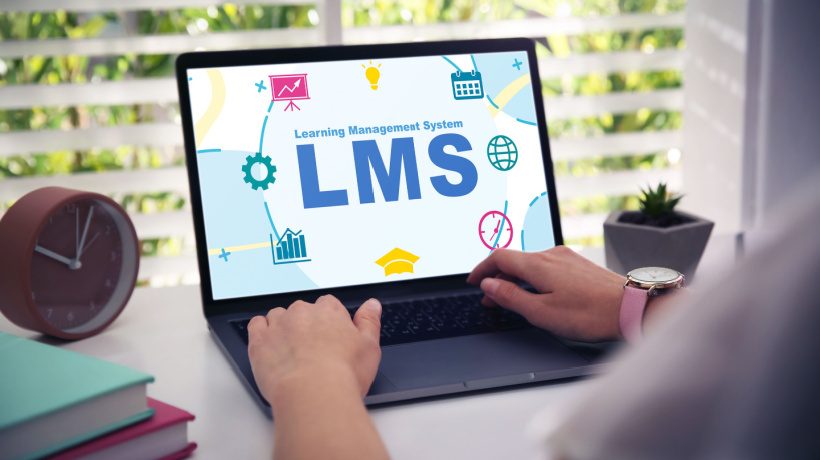[ad_1]

Harnessing LMS-Based Learning Strategies
Are traditional teaching methods enough in a tech-driven world? As digital tools reshape learning, how can an LMS redefine education with strategies that truly engage and drive success?
We all know the digital age has revolutionized education nowadays, offering innovative learning strategies that leverage LMS technology to enhance knowledge delivery and retention. Learning Management Systems (LMSs) are pivotal in implementing effective learning strategies and creating dynamic, personalized, and engaging educational experiences. Here, we explore the top three LMS best practices that exemplify how these platforms drive success in eLearning.
3 Learning Strategies To Implement With Your LMS
1. Blended Learning: Merging Traditional And Digital
Blended learning combines traditional classroom methods with online resources, creating a hybrid model that enhances flexibility and personalization. LMS platforms facilitate this approach by hosting educational content like videos, quizzes, and assignments, enabling learners to explore at their own pace. This strategy aligns perfectly with the learning curve of diverse users, as it tailors experiences to individual needs.
The integration of digital tools in blended learning fosters a seamless transition between offline and online modes. Students can review the content at any time to make sure they fully understand it. Additionally, educators can use LMS analytics to track participation and refine teaching methods, exemplifying eLearning strategies that cater to both educators and learners.
2. Social Learning: Harnessing The Power Of Interaction
One of the most innovative learning strategies is social learning, which emphasizes collaboration and peer interaction. LMS platforms offer features like forums, discussion boards, and group projects, transforming learning into a communal effort. This strategy taps into the social nature of learning, encouraging deeper engagement and retention of concepts.
By creating a virtual space for interaction, LMS tools ensure that learners not only absorb knowledge but also exchange ideas and solutions. For example, learners working on projects within an LMS can collaborate in real time, share insights, and receive peer feedback, making the process dynamic and inclusive. This communal environment reflects modern educational strategies designed to align with the digital age’s demands.
3. Learning Analytics: Driving Data-Driven Education
Data is a cornerstone of digital learning strategies, and learning analytics exemplifies how technology can transform education. LMS platforms use analytics to track user behavior, assess performance, and identify areas for improvement. These insights allow educators to personalize learning paths, making education more effective and targeted.
For instance, if a learner struggles with specific modules, LMS tools can suggest additional resources or adaptive challenges to address gaps. Every learner will get the assistance they require to succeed because of this strategy. By incorporating educational strategies like analytics, LMS platforms empower educators to refine courses and enhance learning outcomes.
The Role Of LMSs In Digital Literacy
LMS platforms not only implement these strategies but also foster digital literacy—an essential skill for modern learners. By engaging with tools like educational games, adaptive learning features, and project-based tasks, learners build confidence in navigating technology-rich environments.
Additional LMS Features For Learning
Gamification: Making Learning Engaging And Fun
Gamification transforms educational content into interactive experiences by incorporating game-like elements such as badges, leaderboards, and challenges. LMS platforms excel at implementing gamification to boost learner motivation and engagement. By creating a competitive yet enjoyable environment, learners retain information better and actively participate in the process. This strategy aligns with modern digital learning strategies, making education both effective and entertaining.
Microlearning: Bite-Sized Knowledge For Busy Learners
In today’s fast-paced world, microlearning caters to learners with limited time. LMS platforms support this approach by breaking down complex topics into small, digestible modules. Learners can access videos, infographics, or quick quizzes that fit seamlessly into their schedules. This format not only enhances retention but also allows learners to progress at their own pace, demonstrating the versatility of educational strategies in the digital age.
Conclusion
The digital age has unlocked immense potential for transforming education through effective learning strategies with an LMS. Approaches like blended learning and social learning emphasize collaboration and personalization, while learning analytics provides actionable insights to optimize outcomes. Additionally, gamification and microlearning make learning engaging and accessible, catering to diverse learner needs and preferences.
By integrating these eLearning strategies, LMS platforms not only improve learning efficiency but also foster critical skills like digital literacy. Whether it’s creating engaging content, analyzing learner progress, or supporting flexible schedules, these innovative learning strategies ensure a future-ready education ecosystem. Leveraging these tools and techniques is key to thriving in a technology-driven world that organizations nowadays utilize for training.
[ad_2]
Source link

